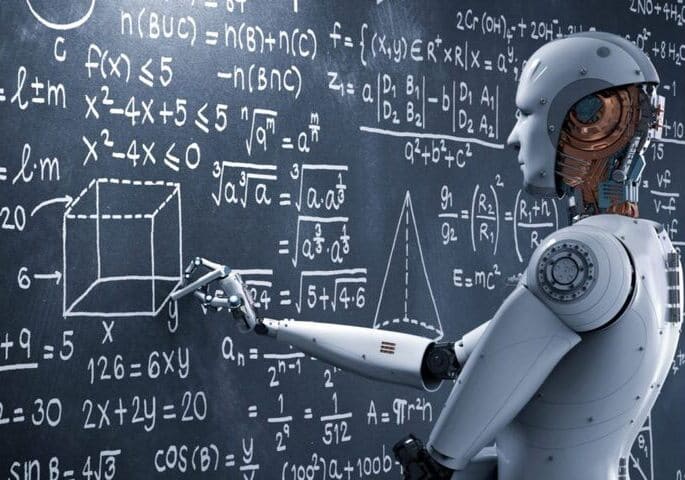The Rise of Artificial Intelligence in American Classrooms
Once considered a futuristic concept, Artificial Intelligence (AI) is now becoming a practical tool in American schools. From elementary classrooms to college lecture halls, AI is reshaping the landscape of education in the United States. While the blackboard and chalk are not disappearing completely, intelligent systems are adding a new layer of sophistication to how students learn and how teachers teach. But how exactly is AI being applied in real American classrooms? Let’s dive into the specifics.
Across the nation, educators are exploring how AI can simplify administrative tasks, personalize student learning experiences, and even identify at-risk students before their grades begin to slip. Teachers are not being replaced—they are being empowered. By leveraging AI tools, they can focus more on what they do best: teaching and inspiring young minds.

How AI Supports Teachers Behind the Scenes
One of the most immediate benefits of AI in teaching is the automation of routine tasks. Grading multiple-choice quizzes, generating lesson plans, and even scheduling parent-teacher meetings are now streamlined thanks to intelligent software. These systems free up valuable hours that teachers can use to plan creative activities or provide one-on-one support to students.
AI also helps teachers gain deeper insights into student performance. Through data analysis, teachers can track progress over time and identify specific areas where a student may need extra help. This analytical approach makes teaching more precise and effective, especially in large classrooms where individual attention can be hard to manage.
Common AI Tools Used by Teachers
| AI Tool | Main Function | Application |
|---|---|---|
| Gradescope | Automated grading | Used in colleges to grade exams and homework efficiently |
| Knewton | Personalized learning paths | Tailors lesson content to individual student strengths |
| Quillionz | Quiz generation | Creates quizzes and assessments from provided text |
| Socrative | Real-time feedback | Interactive quizzes and instant performance analysis |
Customizing Learning for Every Student
No two students learn in exactly the same way, and that’s where AI truly shines. Adaptive learning platforms use machine learning to understand how each student interacts with content. These systems adjust the difficulty, pace, and style of the material based on individual performance and preferences.
This level of personalization allows students to move at their own speed, whether they need more time to grasp a concept or are ready to advance. In schools where classrooms are packed and resources are stretched thin, AI becomes a vital partner in helping every student succeed.
Personalized Learning Features Powered by AI
- Customized quizzes based on knowledge gaps
- Real-time feedback during assignments
- Speech-to-text for students with writing challenges
- Language translation for English language learners
Enhancing Special Education with AI
Special education is another area where AI is making a meaningful impact. Students with disabilities often require unique learning accommodations, and AI can help tailor the educational environment to their needs. Voice recognition tools, screen readers, and intelligent tutoring systems are just a few examples.
For students with autism, AI-driven robots and virtual assistants are being tested to improve communication skills. These technologies provide safe, controlled environments where students can practice social interactions. It’s not a replacement for human interaction, but rather an assistive tool to support development.
Teacher Training and Professional Development
Integrating AI into the classroom isn’t just about giving students new tools—it’s also about preparing teachers. More school districts in the U.S. are now offering professional development courses focused on digital literacy and AI integration. These programs teach educators how to use AI ethically and effectively, ensuring the technology complements their teaching instead of replacing it.
As AI becomes more prevalent, ongoing training will be critical. Teachers need to understand not just how to use these tools, but also how to interpret the data they provide and apply it meaningfully to lesson planning and student assessment.
Challenges and Ethical Considerations
Despite its many advantages, applying AI in education is not without challenges. Privacy concerns are at the top of the list. Collecting and analyzing student data raises questions about consent, data security, and the ethical use of information. Schools must comply with laws like FERPA (Family Educational Rights and Privacy Act) and ensure that AI vendors follow strict data protection policies.
Another concern is the risk of over-reliance. AI should support, not substitute, the human elements of teaching—empathy, mentorship, and creativity. It’s important that educators maintain control over curriculum and decision-making, using AI as a support system rather than a driver.
Future Outlook: Where Is AI in Education Headed?
Looking ahead, the role of AI in U.S. classrooms is only expected to grow. Future developments may include AI that can detect emotional cues, helping teachers understand when a student is confused, bored, or disengaged. Virtual reality powered by AI may allow students to experience history or science in immersive, interactive environments.
Education leaders are also exploring AI’s potential for predictive analysis—anticipating dropouts, optimizing school funding, and designing better learning environments. If developed and implemented thoughtfully, these innovations could transform education into a more responsive, inclusive, and dynamic system.
Conclusion
The integration of AI into American education is not just a technological shift—it’s a cultural one. By helping teachers save time, customizing learning experiences, and offering new support for students with special needs, AI is redefining the classroom. Yet, as we embrace these tools, we must also stay mindful of the ethical, privacy, and human dimensions of education. The future of teaching in the U.S. lies not in replacing teachers with machines but in enhancing their power to educate, nurture, and inspire. With the right balance, AI and human educators can work hand-in-hand to build a smarter, more equitable learning future.